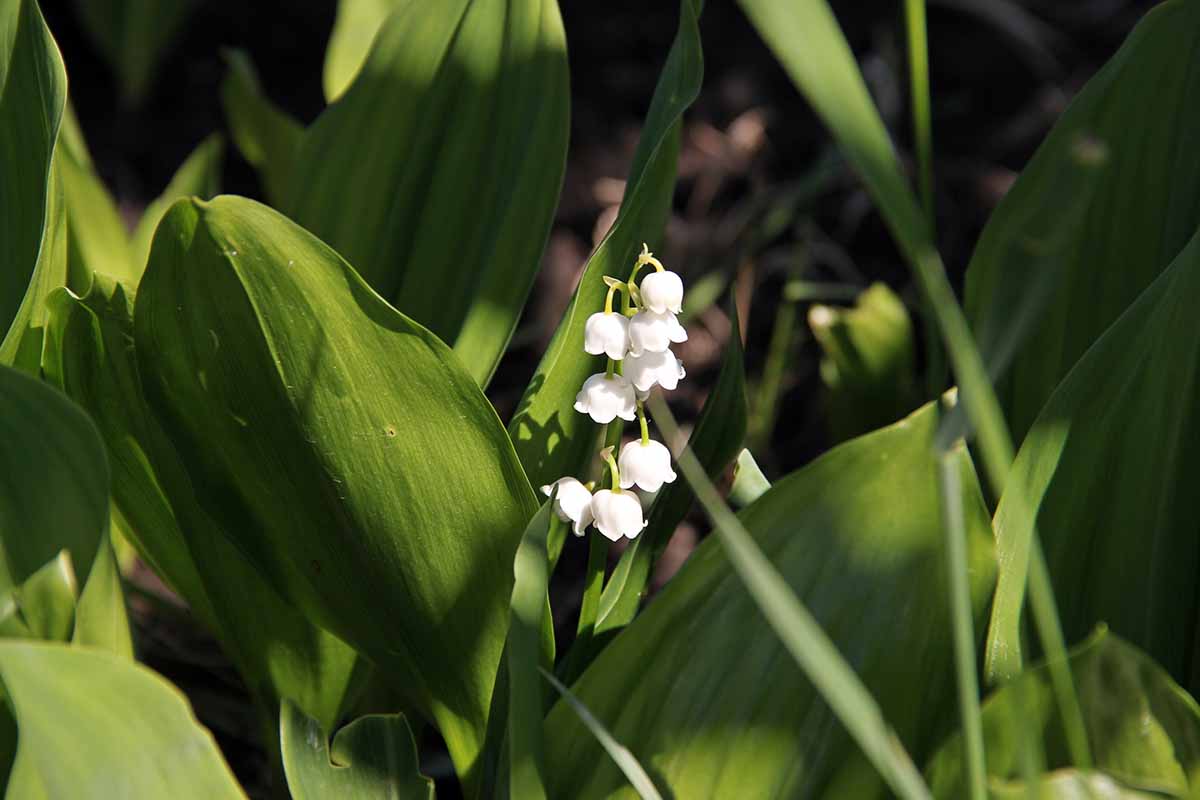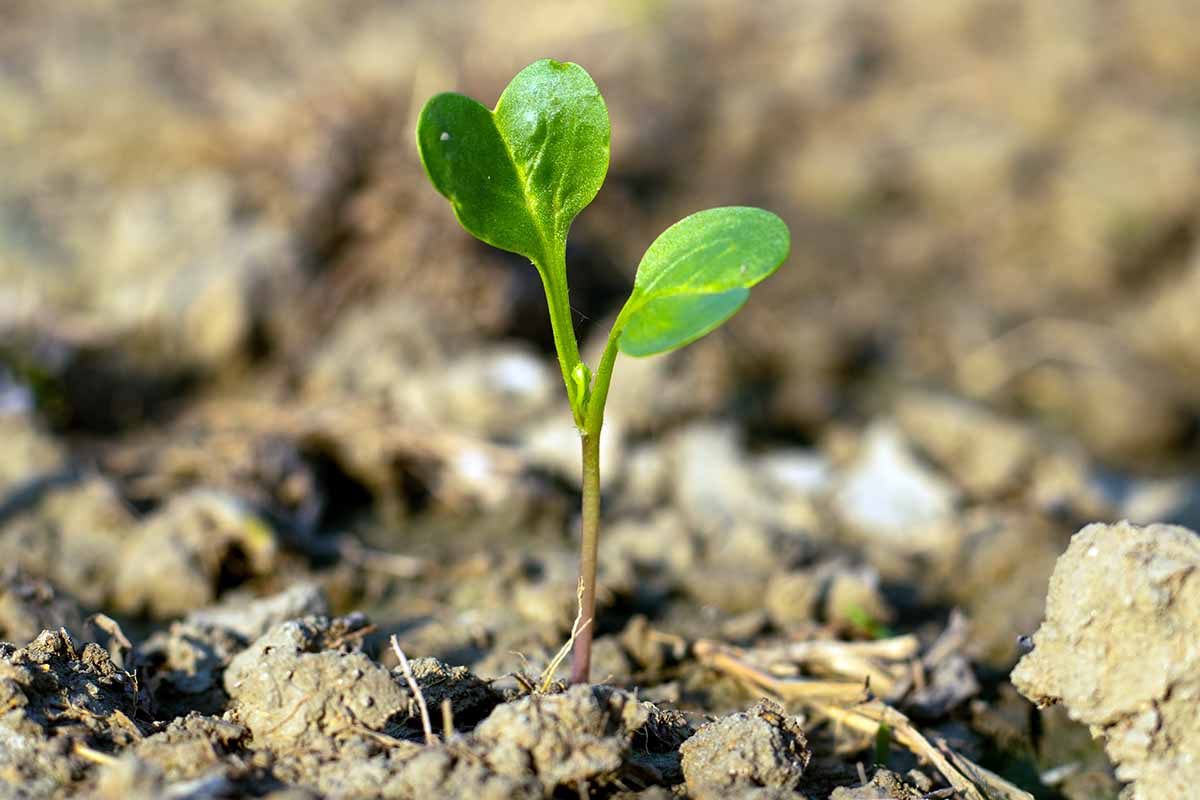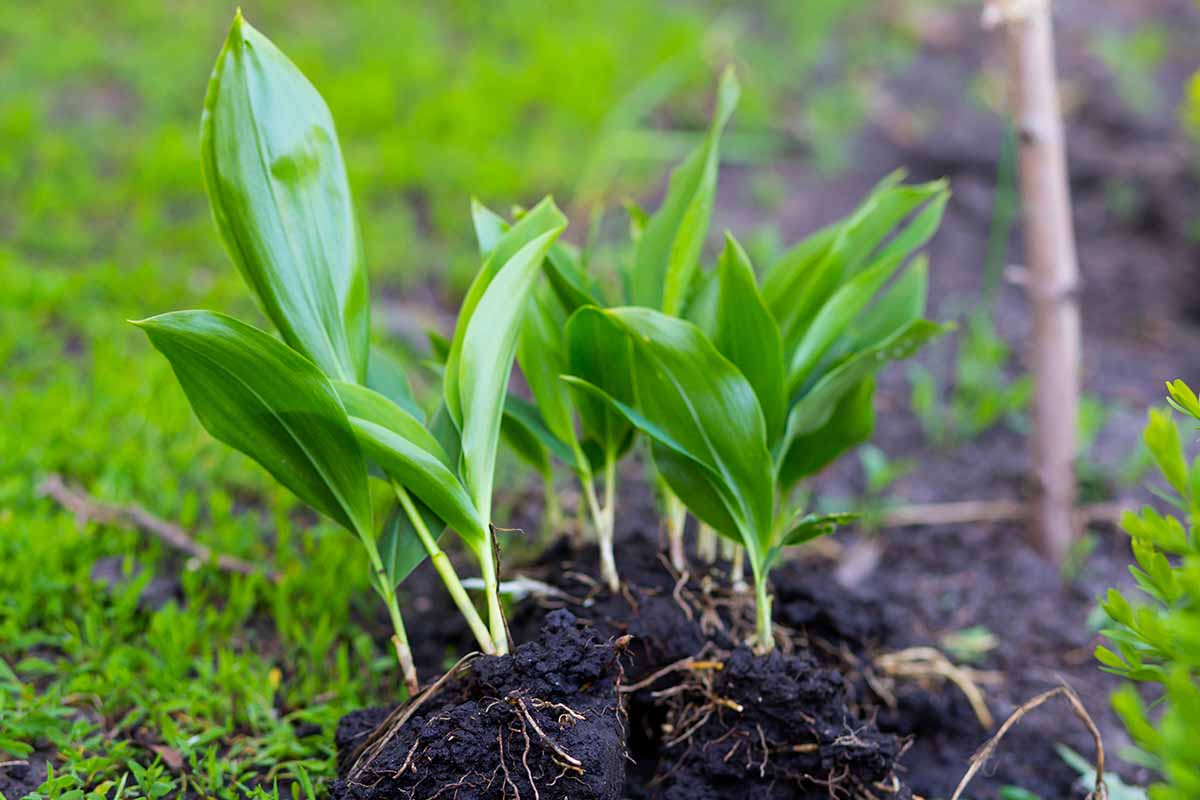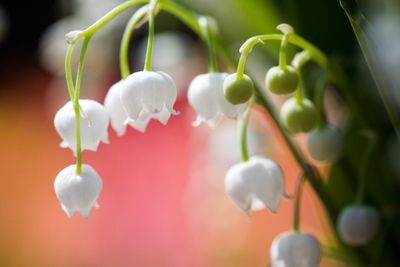Lily of the valley is a classic shade garden plant, highly valued for its charming white bell-shaped flowers and lovely fragrance. However, when your lily of the valley fails to bloom, all you’re left with is a mass of plain green foliage. Getting these plants to flower reliably requires meeting a few key growing conditions: partial shade, consistent moisture, and adequate space. If any of these are lacking, the plants may not set buds or produce flowers.
Fortunately, fixing non-blooming lily of the valley is usually quite straightforward. With a few simple adjustments you can have an abundant display of blooms next season. Here are some potential causes and solutions for lily of the valley that won’t bloom
Too Much Sunlight
Lily of the valley does best in partial to full shade. While a few hours of early morning sun is fine, the plants need protection from intense midday and afternoon sunlight. Too much light exposure can disrupt bud formation. Make sure plants get shade from around 10 AM onward. Morning sun is ideal.
Immature Plants
Don’t expect much flowering from new lily of the valley plantings for the first year or two Young plants need time to establish roots and reach maturity before they will bloom significantly Be patient and provide optimal growing conditions – the flowers will come in time.
Inadequate Moisture
Consistently moist soil is critical when lily of the valley starts setting flower buds in early spring. If the winter or spring is drier than normal, the soil may not have enough moisture for the plants to form buds properly. Water deeply once a week if rainfall is lacking.
Overcrowding
Lily of the valley spreads rapidly, and over time the roots can become severely congested. Overcrowding restricts air and water supply to the roots, reducing vigor and flowering. Divide congested plants every 3-5 years in winter. Replant divisions 12″ apart.
Compacted Soil
Compacted, oxygen-deprived soil prevents proper root function and drainage, which can limit flowering. Use a garden fork in late winter to gently “fluff up” the soil and improve conditions.
Extreme Temperatures
Flower buds can be damaged by late spring frosts or extreme summer heat. Avoid planting lily of the valley in frost pockets. Add mulch to protect from erratic spring temperatures. Provide some shade protection if summers get extremely hot.
Too Much Fertilizer
Heavy fertilization encourages excessive foliage growth at the expense of flowering. Lily of the valley has low nutritional needs. Apply a 1-2 inch layer of compost or a light feeding of balanced organic fertilizer in early spring.
Inadequate Chilling
Lily of the valley requires a cold dormancy period each winter to trigger spring flowering. In very mild climates, the lack of sufficient chilling hours can disrupt bloom cycles. Try storing pots or root crowns in a refrigerator for 2-3 months.
Pest or Disease Problems
Slugs, snails, and mites can attack emerging buds and hamper flowering. Improving air circulation, removing debris, and applying horticultural oil helps prevent these pests. Fungal diseases like botrytis blight can also affect the blooms. Avoid wetting the foliage and use fans to increase airflow.
Age of Planting
Lily of the valley plantings can start to decline after 8-10 years. Old plantings with reduced vigor will not flower as well. Start new plants from seed or division every decade to keep flower production high.
Excess Shade
While lily of the valley thrives in partial shade, too much shade reduces flowering, especially deep under trees or buildings. Try to provide some minimal early morning sun or consider moving plants.
Poor Drainage
Stagnant moisture and saturated soil deprives roots of oxygen. Ensure beds drain adequately. Improve drainage by amending soil with compost or sand. Plant in raised beds if drainage is very poor.
Root Damage
Physical damage to the underground pips and roots from digging or construction activity can disrupt growth and flowering. Avoid disturbing the soil around existing plants.
Too Little Foliage
Aggressive division or pruning that removes too much of the top growth leads to reduced flowering. Allow foliage to recover before dividing plants. Never prune back more than 1/3 of the leaves.
How to Get Lily of the Valley Blooming Again
-
For the best bud formation, provide partial to full shade from mid-morning onward along with consistently moist, but well-draining soil.
-
Water thoroughly if spring is drier than usual when the plants are setting buds.
-
Divide congested plants every 3-5 years in winter to improve air circulation and vigor.
-
Loosen compacted soil with a garden fork and amend with organic matter if needed.
-
Fertilize lightly in early spring with compost or an organic balanced fertilizer.
-
Inspect regularly for pests like slugs and mites; use organic solutions if found.
-
Start new plants from seed or divisions every 8-10 years to maintain productivity.
-
Give lily of the valley 1-2 years after planting to establish before expecting significant flowering.
With a little detective work and a few easy fixes, you can get your lily of the valley blooming abundantly again. Consistent moisture, partial shade, and adequate space are the keys to success with this beloved shade plant.
Too Much Light
For an abundance of flowers, lily of the valley needs to grow in the shade.
It can handle a few hours of sun in the early morning, but for the most part, it needs to be in the shade during the day to grow lots of flowers.

And when the plants receive too much sunshine, bud set may not happen.
To get lots of buds, give plants part- to full-shade starting around 10 a.m., so they don’t have to deal with the hot afternoon sun.
When new plantings fail to bloom, it could be that they’re simply not mature enough to flower yet.

Generally, after planting it can take new stock up to two years to start blooming.
For now, make sure they have the best conditions for strong growth, and wait. Once they’re established, flowers will come.
Reasons Why Lily of the Valley May Fail to Bloom
Overall, lily of the valley, Convallaria majalis, is a low maintenance perennial.
Affected by very few disease or pest problems, they spread fast in optimal conditions. The thick, fleshy roots quickly fill in beds and plants come back fuller every year.
It doesn’t matter how much you prune lily of the valley plants; they quickly grow into a nice ground cover that keeps weeds back.

Lily of the valley needs some shade, regular watering, and loose soil with a pH of 6 to grow into colorful plants with lots of flowers. 0 to 6. 5.
While C. Although majalis has a reputation for being tough and reliable, problems like root rot can happen if they are planted in soil that is too wet. For healthy plants, the soil must be able to drain well.
As light feeders, a one- or two-inch layer of compost in early spring meets all their nutritional requirements.
Our growing guide has all the information you need to know about how to plant and take care of lily of the valley.
Plants flower in the spring and have lush leaves. In the fall and winter, they go dormant, but in places with mild winters, they can stay evergreen.
They do very well in cold weather and can be planted in USDA Zones 2 through 9, but when it’s hot, the plants tend to shrink and die back.
If your plants aren’t producing flowers, it’s likely that there’s something amiss in their growing environment. It’s usually easy to solve the issue and they’ll provide you with plenty of blooms next year!.
Here are the top five reasons why these plants may fail to bloom:
Solving Lily of the Valley Growing Problems Like a Pro
FAQ
Why has my lily of the valley not flowered?
How many years does it take for lily of the valley to bloom?
What to do when lilies don’t bloom?
Why is my lily plant not flowering?
Does Lily of the Valley bloom in winter?
Lily of the valley is a perennial bloomer that flowers in spring and summer. It goes dormant with no blooms in fall and winter. The conditions that this flower likes include partial shade and moist, loose soil. If it gets too dry, especially, the plant will not flourish. It is hardy in cold temperatures, all the way to USDA zone 2.
Why is my Lily of the valley not blooming?
But if something is amiss, the plant may fail to flower. Keep reading to learn some easy fixes for lily of the valley that won’t bloom! Here’s a preview of what’s ahead: Overall, lily of the valley, Convallaria majalis, is a low maintenance perennial. Affected by very few disease or pest problems, they spread fast in optimal conditions.
Can Lily of the Valley grow unchecked?
If left to grow unchecked, lily of the valley plants quickly form a handsome ground cover that effectively chokes out weeds. To grow into vibrant plants with plenty of flowers, lily of the valley needs partial shade, consistent moisture, and loose soil with a slightly acidic pH of 6.0 to 6.5.
Can Lily of the valley be planted under a tree?
Lily of the valley is an ideal plant for woodland settings and shady areas in the garden. They are also great plants to use as ground covers in shaded locations when planted en masse. The plants do very well underplanted under a canopy of trees, and planted among other shade garden plants such as ferns.
- The Ultimate Guide to Growing Strawberries in Raised Beds - August 8, 2025
- No-Dig Garden Beds: The Easiest Way to Grow a Beautiful Garden - August 6, 2025
- How to Protect and Preserve Wood for Raised Garden Beds - August 6, 2025

